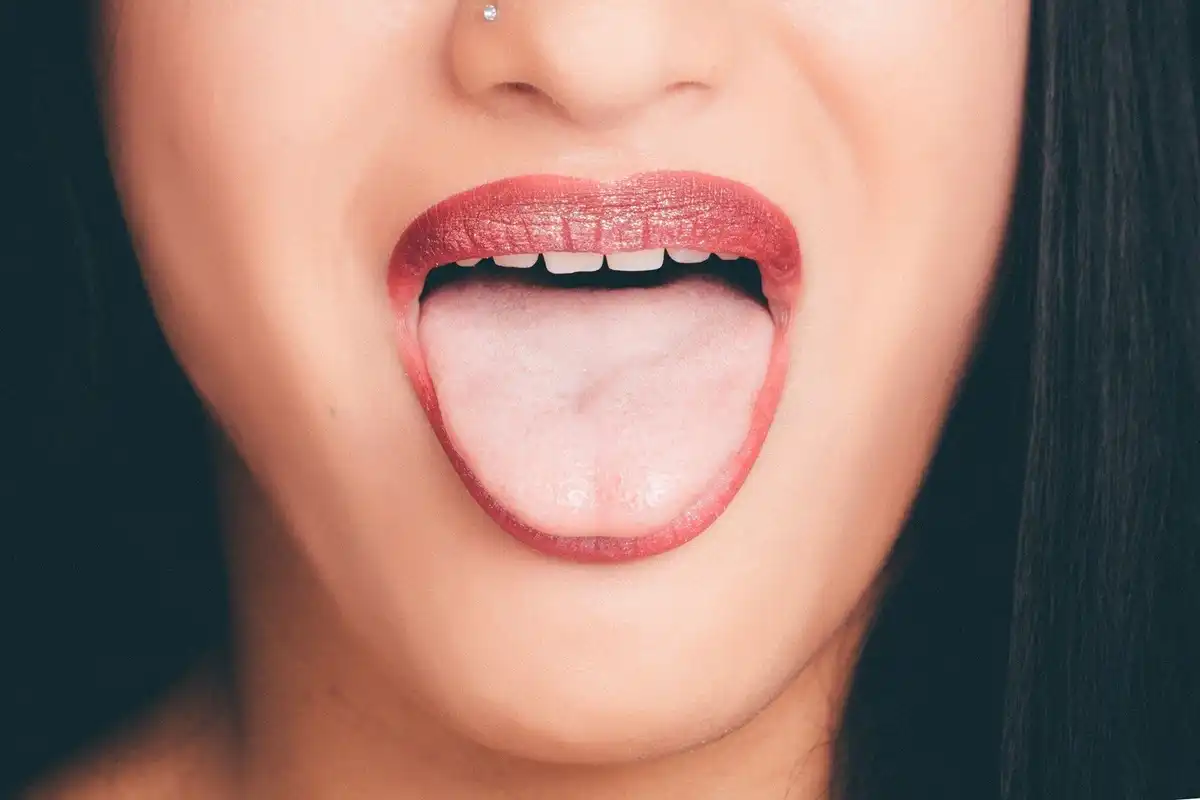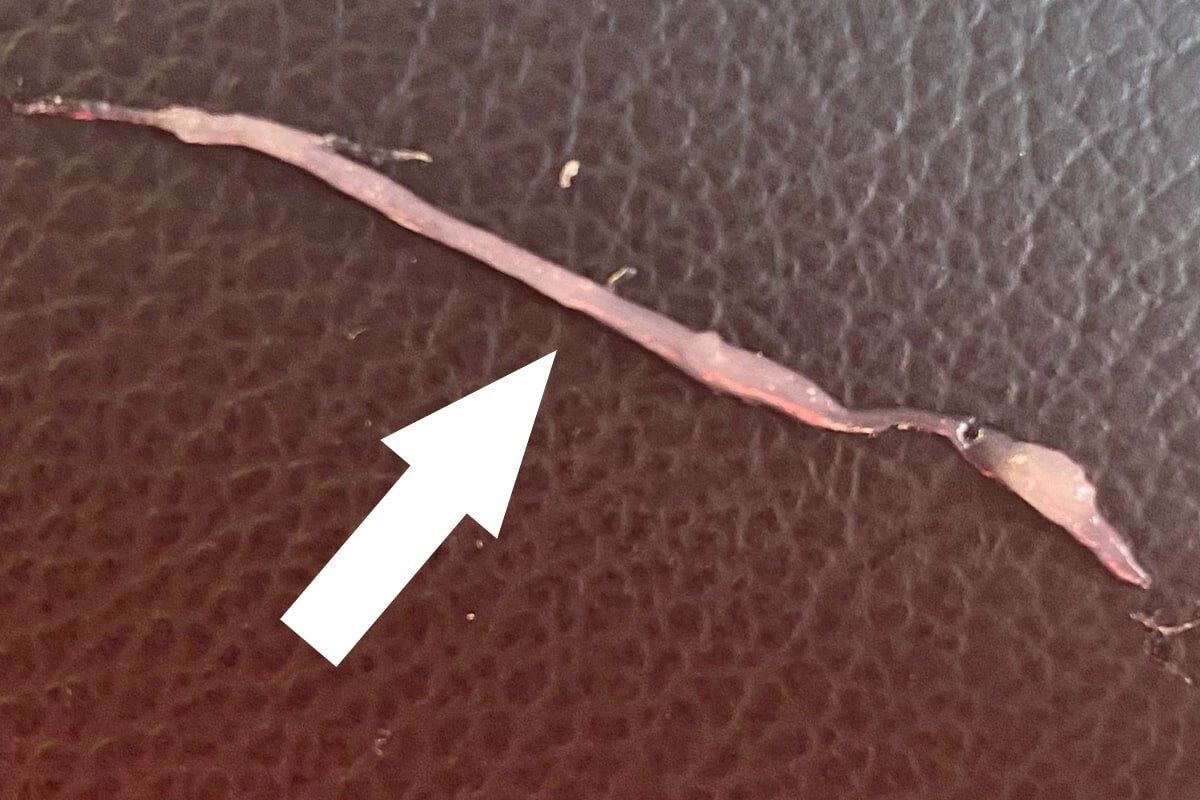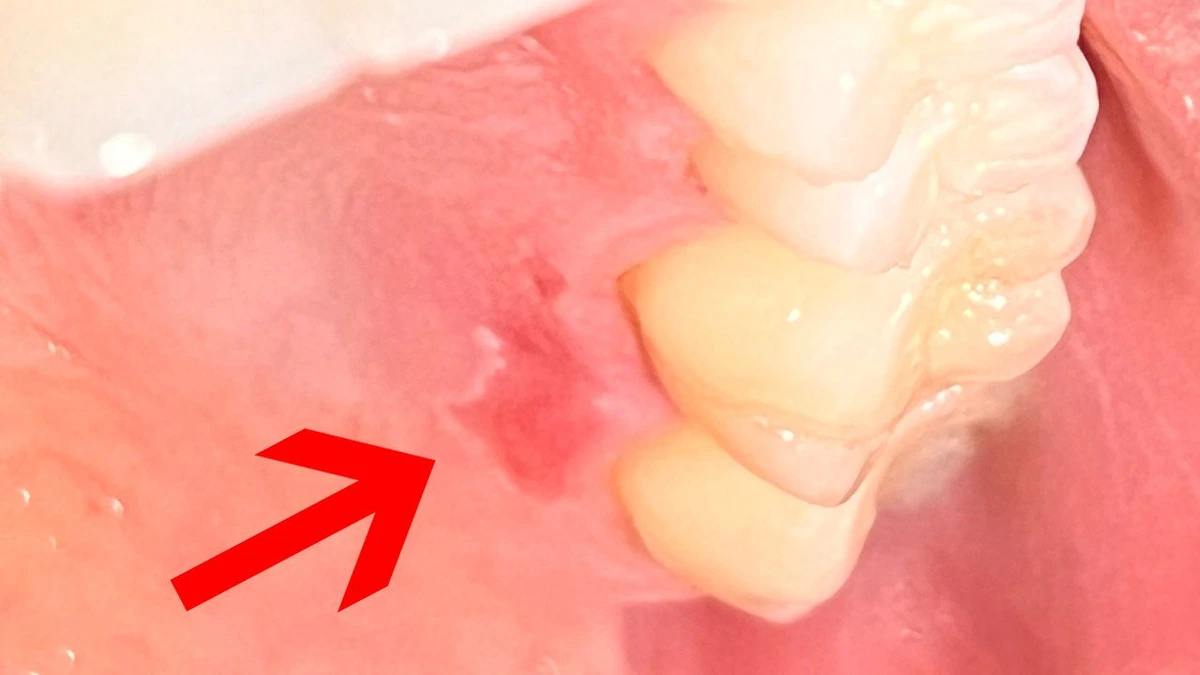7 Reasons The Skin Inside Your Mouth Is Peeling Off


Do you notice oral tissue sloughing or peeling skin in your mouth? Any time we see skin inside of the mouth peeling, we usually need to use a process of elimination to figure out what’s causing it. Areas like your lips, roof of mouth, or inside cheek peeling can be due to anything from active ingredients (SLS) in toothpaste to allergic reactions to undiagnosed diseases. Some are more common than you might expect. Some of these issues can even be accompanied by bleeding gums discoloration, which may signal a deeper issue like gum disease. Once you start paying a little more attention to what you’re putting on your teeth, gums, and other warning signs, it’s a lot easier to figure out why you have skin peeling inside the mouth or shedding oral mucosa.

What Causes Tissue Sloughing In The Mouth?
People who tend to have sensitive skin or react to SLS usually see inside of mouth peeling after a while. Not necessarily if they’re using general products that contain SLS, but if they’re putting it in their mouth in the form of toothpaste. In addition to peeling, some individuals might also experience teeth sensitivity when using certain oral hygiene products.
SLS isn’t the only cause of skin peeling inside the mouth, but it is one of the very first things your dentist or hygienist will ask about if you’re complaining of sloughing skin. Generally, shedding oral mucosa can be anywhere, like the inside of your lips or cheeks. Whereas other types of skin peeling may only be in certain areas of your mouth.
7 Causes Of Skin Peeling Inside The Mouth
1) It’s Your Toothpaste
The easiest way to figure out if it’s the SLS that’s causing skin peeling inside the mouth is to stop using that toothpaste and use one that doesn’t have the ingredient. Start using an SLS-free toothpaste and after a couple of weeks, evaluate your mouth to see if there’s a difference. It there is, it’s likely the sodium lauryl sulfate causing oral mucosa peeling. If it isn’t, you’re about to do a bit more detective work!
Related: Best SLS-Free Toothpaste
2) Food Allergies
Are you eating a highly acidic diet? It could be irritating the oral mucosa membranes inside your mouth. A balanced diet is key here. Other times, people develop food allergies as they get older. Even though food allergies don’t typically cause your skin to peel, they can cause redness and dry patches similar to eczema. A rash around your mouth and face is also common.
3) Oral Trauma
How many times have you ever burned your mouth on a piece of pizza? It’s more common than you probably thought. Usually, food burns happen in the roof of your mouth, where that hot gooey cheese gets stuck to your palate. After a day or two, the skin there starts to peel.

Other oral trauma is poking or cutting the inside of your mouth with a tortilla chip. No, I’m not making this up. We see it all the time in the dental office. As your gums start to heal in those spaces, there’s usually a little peeling.
These are just a couple of examples of oral trauma. Sporting accidents, car wrecks, and other injuries can also be to blame. It's important to note that injuries to the gums can sometimes lead to bleeding gums or even gum disease if not properly cared for.
4) Oral Thrush
A typical thrush outbreak will have white residue that can be wiped away, revealing red, raw skin underneath. It might be in the roof of your mouth or just inside your cheeks.
Thrush can also be seen under oral appliances like dentures and partials when they aren’t cleaned properly.
5) You’re Biting Your Cheeks
Some of us tend to clench and bite our teeth so much that we catch the inside of our cheeks in the process. Like a callous, our mouth can develop roughened skin where irritation is always occurring. You might see the peeling skin in a straight line inside your cheek, right where your teeth hit together. In some cases, there is even a scalloped shape to it, based on the biting edges of your smile.
Cheek biting may be habitual or because of stress and concentration. Chances are you probably don’t even realize you’re doing it. You might need to address whatever you’re focusing on or stressing over first!
6) Stevens-Johnson Syndrome
If you have SJS, the most common places to see skin peeling is around your face and chest. It’s also sometimes called “toxic epidermal necrolysis.” The good news is that it’s not contagious since it’s an autoimmune disorder.
7) Oral Keratosis
You can also see keratosis on the sides of your tongue if you’re biting your tongue or grinding your teeth at night while you sleep.
If your keratosis is caused by something like a temporary dental crown or a rough margin on a filling, your dentist will want to adjust it to eliminate the irritating edge.
What To Do If The Inside Of Your Mouth Is Peeling?
Do you need to call a dentist about skin peeling inside the mouth? Not if it’s something isolated and temporary, like a pizza burn. But if something in your mouth is hurting you—like a filling or braces—you’ll definitely want to have your dentist adjust it to eliminate the irritant at the source.
Another potential cause of oral mucosa peeling is oral lichen planus, a chronic inflammatory condition that affects the mucous membranes inside your mouth. Lichen planus causes flaky and crusty white patches to develop inside your mouth. These patches can be itchy and even cause painful sores on the gums. While they’re not contagious, they can lead to significant discomfort, including teeth sensitivity. The exact cause of oral lichen planus is unknown, but it's believed to be related to an abnormal immune response. If you suspect oral lichen planus, it’s important to see a dentist or specialist for proper diagnosis and management.
For chronic mouth skin peeling that doesn’t respond to changing up your toothpastes, be sure to bring the issue up to your dentist at your checkup. It’s best to be on the safe side. Although peeling skin may not be anything serious, it’s important to rule out oral cancer or autoimmune diseases that you might not know you have. Yes - your dentist knows how to screen for those symptoms too!
How To Prevent Skin Peeling Inside Mouth?
Any time you’re about to take antibiotics, make sure you’re getting good bacteria in your diet. Such as yogurt or a yogurt-based live culture drink. Taking them alongside your prescription can help you reduce your chances of getting oral thrush, as will improved oral hygiene!
Denture wearers: be sure you’re removing your prosthesis each night and maintain good oral hygiene.
To prevent mouth skin irritation, stay away from spicy foods, sour drinks, and smoking. Brush your teeth often and use a mouthwash without alcohol to help heal and calm irritation.
When To Talk To A Dentist
Dentists are doctors of the mouth and oral cavity. They’re trained in oral and systemic pathology, not just teeth! If you have skin peeling inside the mouth or gums sores, a dentist is one of your best oral health resources.
If you aren’t already, make sure you’re seeing your dentist every six months for a checkup. But if you’re experiencing a one-off flareup of skin peeling in your lips and cheeks, ask for a limited exam. This brief evaluation will give you time to discuss a specific problem with your dentist, have them evaluate it, and run any tests if needed. Sometimes the peace of mind is all you need!

Make your inbox smile!
Subscribe






